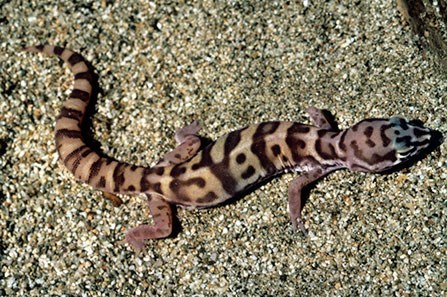|
Viewing wildlife is often a priority for visitors to national parks. Arguably the most conspicuous critters abroad in the daytime in Joshua Tree National Park are the lizards. Wherever you go in the park, spring, summer, or fall, you are likely to see lizards. In spring, they are especially abundant. Lizards are made for desert life 

There are two basic lizard lifestyles 
Each community has a large herbivorous lizard. On the desert flats it is the desert iguana, in the rocky areas it is the chuckwalla. This finely tuned division of resources is common in communities with many species. Even though the lizard communities of North American deserts are simple compared with those of Australia and South Africa, this complex partitioning of resources among finely adapted species is apparent here. When active, most desert lizards maintain a body temperature that is favorable for metabolism by basking in the sun until they reach about 95° F. It is this practice of basking that makes lizards a conspicuous part of the desert scene. Most desert lizards feed on insects, but our two largest-the chuckwalla and desert iguana-eat mainly flowers and leaves. Many of the smaller species of lizards have special "break points" in the tail bones. The tail beyond these points can be discarded in an emergency, such as being seized by a predator. They are then able to grow a new tail over the following weeks, although the regenerated tail is usually smaller and plainer than the original. Observing Lizards For the opportunity to see the largest of our lizards, the western chuckwalla, drive along Pinto Basin Road, slowing where it passes through areas with rocky outcrops. Although they are much less numerous than they were 40 years ago, you might just catch a glimpse of a large (12 inch), heavy-bodied lizard sitting near the very top of an outcrop. Park chuckwallas are very wary, and can seldom be approached closely. Please don't disturb them. They need to bask in the sun in order to absorb the heat necessary to digest the plants they have consumed. by Dr. Harold De Lisle, herpetologist
|
Last updated: February 28, 2015
